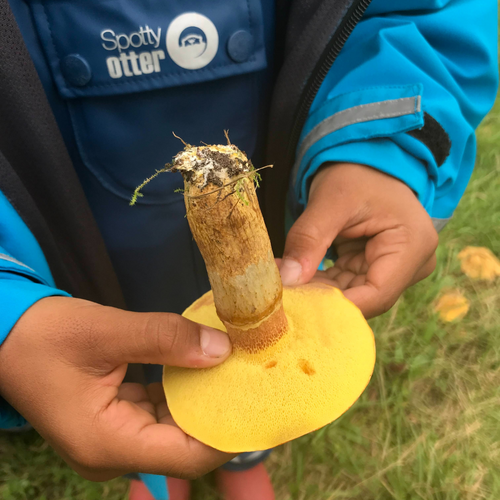Happy UK Fungus Day!
Posted by Carmen on 5th Oct 2023
Here at Spotty Otter our Mushroom experts are our friends Carmen and her son, @carmypeach can often be found out searching for mushrooms. We knew she would be the perfect person to write this blog for us.
Uk Fungus Day
If you’re reading this then it's likely that (like me) you find fungi FAB-U-LOUS!
Neither plants nor animals, these amazing organisms play a key part in our lives and quite simply life on earth would not exist without them.
There are MILLIONS of fungal species in the world and their names can be really quite creative, some sound like they’re straight off a fun cocktail menu! There's the ‘pink disco’, the ‘cinnamon jelly baby’, the ‘bug sputnik’ and my personal favourite is the ‘drumstick truffle club’.
They come in all different shapes and sizes too! Some are shaped like stars (Collared Earthstar), others resemble coral (Yellow Stagshorn) and then there’s the Orange Peel Fungus which looks like…yup you guessed it…a peeled orange. Mushrooms can be used to make cheese, medicinal products, fabric dye, building materials, beer, bio fuels and so much more!
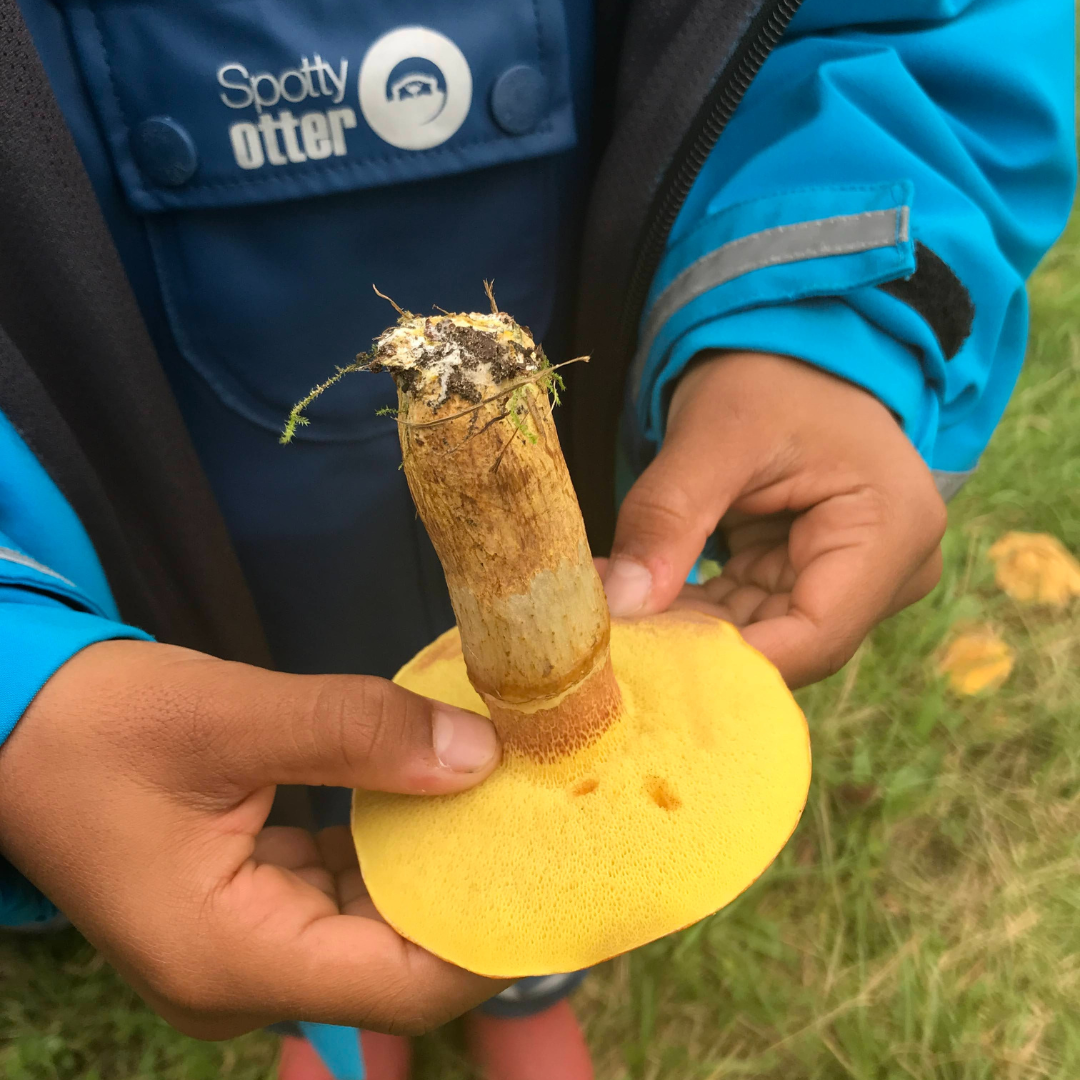

Many have unique features such as some of the bolete shrooms, their yellow flesh turns blue when cut or damaged. This is due to the oxidation of the compound, gyrocyanin, which triggers the colour change. The stinkhorn mushroom is so called as you can smell it before you see it, it smells putrid like rotting flesh. This is so it attracts flies which then help disperse its spores.
If you still aren’t convinced that mushrooms are real life superheroes then read on!
- Mushrooms can help with blood clots, the Bleeding Tooth fungi contains a compound that helps stop blood clots from forming. The chemical compound is called atromentin and this has anticoagulant properties.
- Looking for a shroom night light? Well did you know that some fungi glow in the dark! There are around 70+ species of bioluminescent fungi, oxyluciferin is found in all these glowing shrooms and gives the fungi their radiance.
- Mushrooms can talk (in their own little shroomy way)! Earlier this year a UK scientist discovered that mushrooms send electrical signals to each other and the patterns were similar to that of human speech!
- The health of a forest is all down to the mycorrhizal network going on beneath our feet and it's powered by shrooms! The ‘roots’ of a mushroom are called mycelium and this connects individual plants and trees together and transfers water, nitrogen, carbon and other minerals to feed the trees. It is through this network that the trees also communicate to each other.
- Say Whaaaat??? Did you know that the biggest organism on earth is a fungus? The mycelium of one specific honey fungus mushroom in Oregon spans a whopping 2.4 miles across the Malheur National Forests.
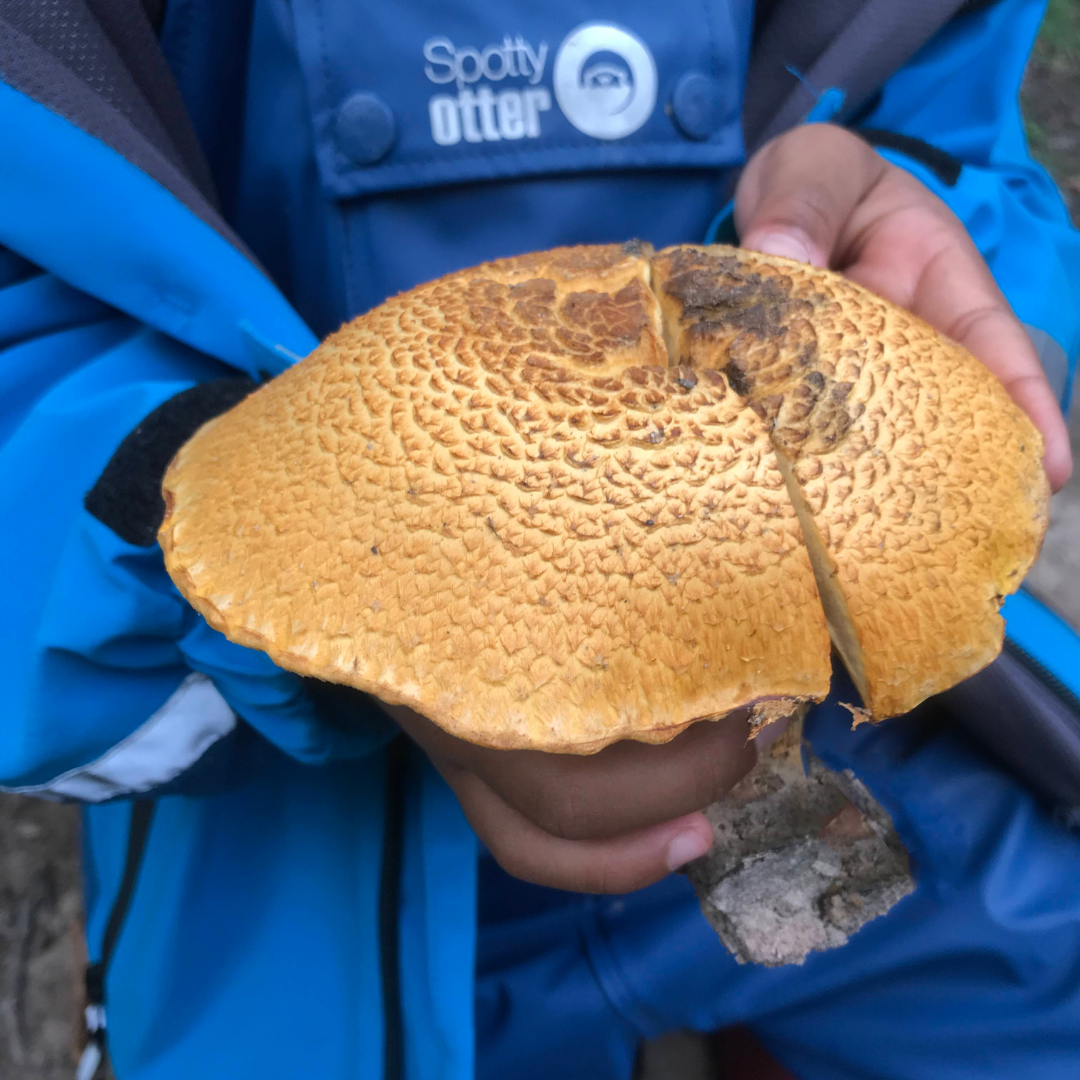
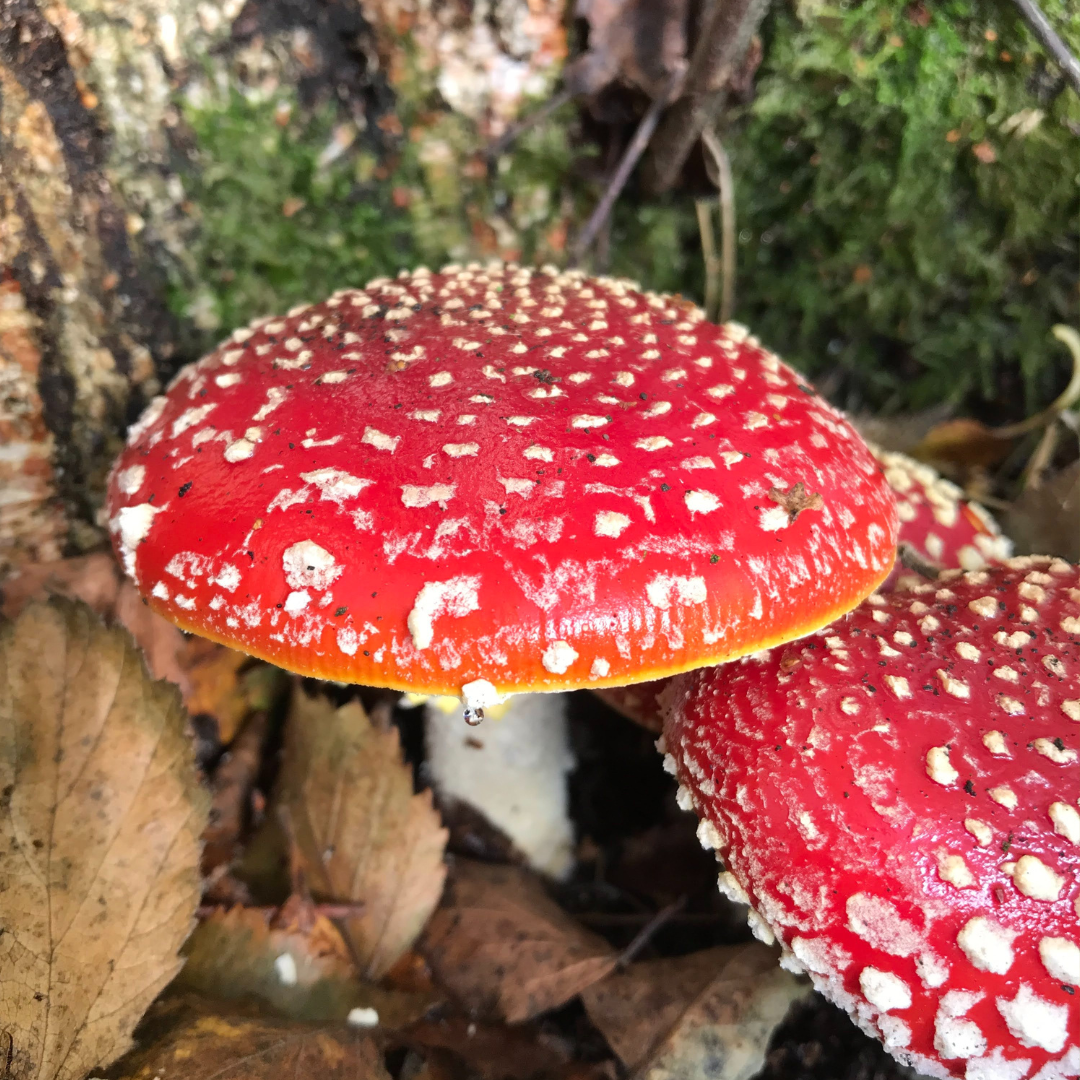
How to make a spore print
A really fun, free and creative activity to do with your children and all you’ll need are a few mushrooms, white paper (or card) and a glass. For bonus points you could also add some googly eyes to your prints!
1 - Start by finding your (non poisonous) mushrooms, I find that shrooms with black or brown gills give the best prints.
2 - Remove the stem from the mushroom so you are left with just the round cap.
3 - Then simply place the cap
with the gills facing down, onto your piece of paper and place a glass over it.
4 - Best left overnight but some prints appear within a couple of hours.
5 - Spray the print with hairspray to make it last longer and add some googly eyes!
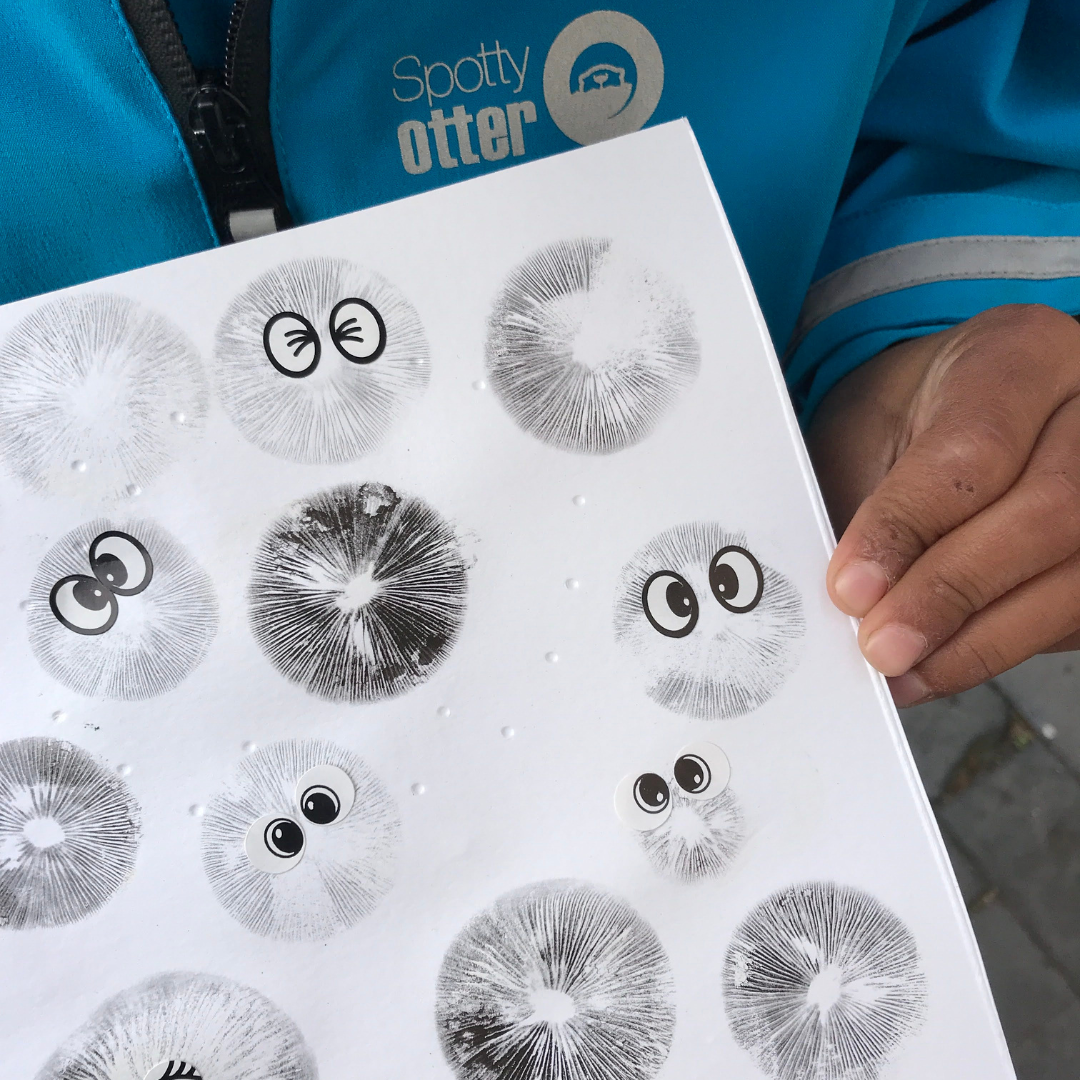
The UK Fungus Day is on the 8th Oct and there are lots of fun activities up and down the country that you can take part in ranging from fungi foraging walks, quizzes, shroom photo competitions and much more. Follow @ukfungusday for up to date news and information.

